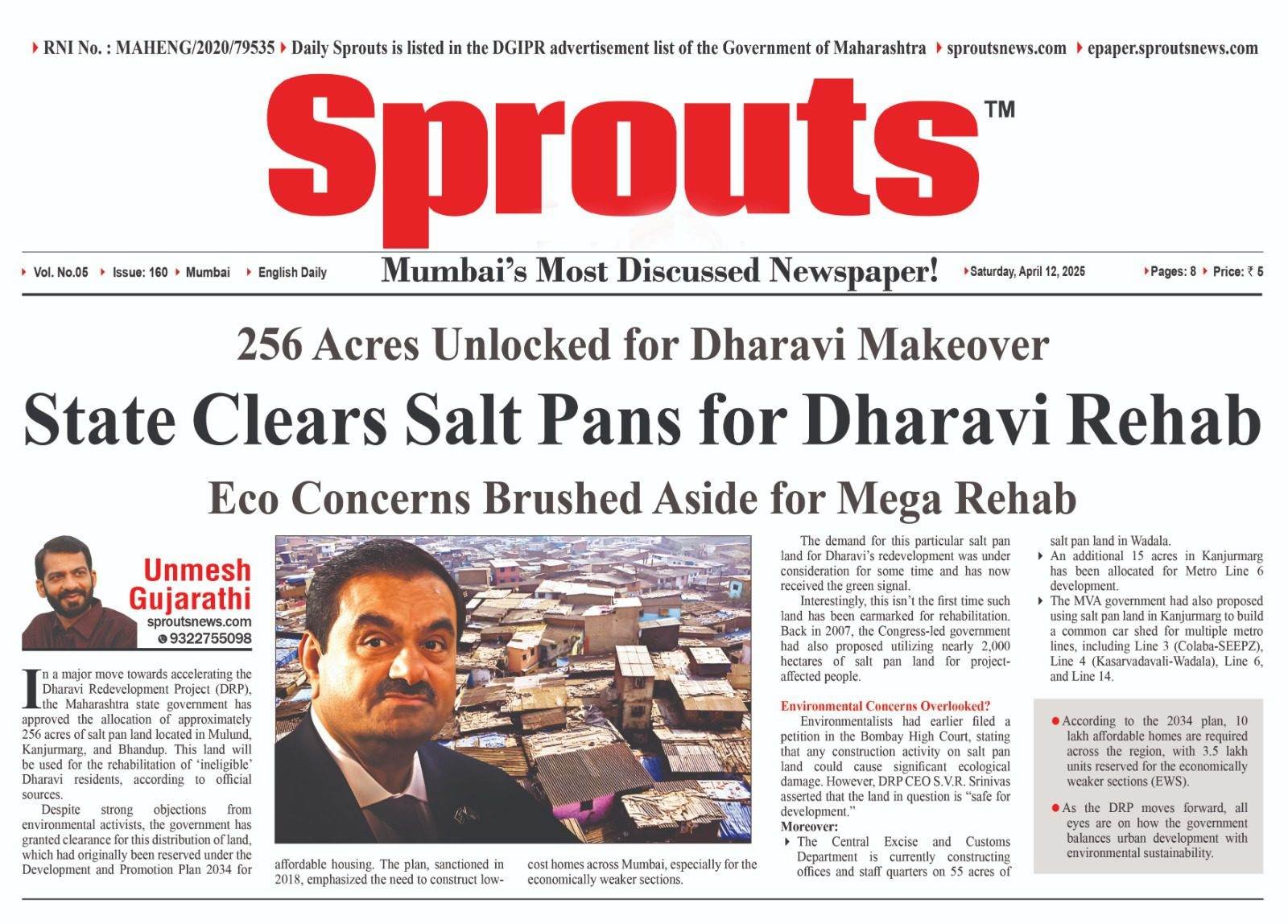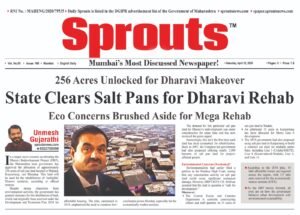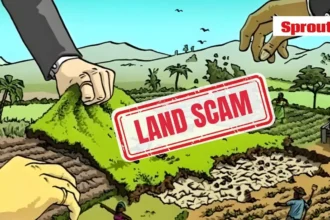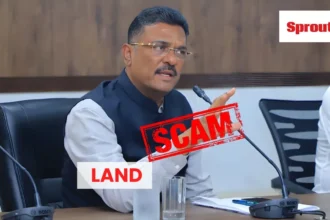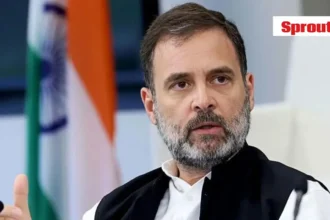State Clears Salt Pans for Dharavi Rehab
• 256 Acres Unlocked for Dharavi Makeover
• Eco Concerns Brushed Aside for Mega Rehab
Unmesh Gujarathi
Sprouts News Exclusive
In a major move towards accelerating the Dharavi Redevelopment Project (DRP), the Maharashtra state government has approved the allocation of approximately 256 acres of salt pan land located in Mulund, Kanjurmarg, and Bhandup. This land will be used for the rehabilitation of ‘ineligible’ Dharavi residents, according to official sources.
Despite strong objections from environmental activists, the government has granted clearance for this distribution of land, which had originally been reserved under the Development and Promotion Plan 2034 for affordable housing. The plan, sanctioned in 2018, emphasized the need to construct low-cost homes across Mumbai, especially for the economically weaker sections.
The demand for this particular salt pan land for Dharavi’s redevelopment was under consideration for some time and has now received the green signal.
Interestingly, this isn’t the first time such land has been earmarked for rehabilitation. Back in 2007, the Congress-led government had also proposed utilizing nearly 2,000 hectares of salt pan land for project-affected people.
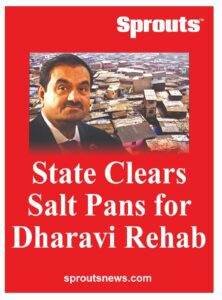
Also Read: Kerala’s Healthcare Crisis: FMGs Fueling Negligence Rise.
Environmental Concerns Overlooked?
Environmentalists had earlier filed a petition in the Bombay High Court, stating that any construction activity on salt pan land could cause significant ecological damage. However, DRP CEO S.V.R. Srinivas asserted that the land in question is “safe for development.”
Moreover:
• The Central Excise and Customs Department is currently constructing offices and staff quarters on 55 acres of salt pan land in Wadala.
• An additional 15 acres in Kanjurmarg has been allocated for Metro Line 6 development.
• The MVA government had also proposed using salt pan land in Kanjurmarg to build a common car shed for multiple metro lines, including Line 3 (Colaba-SEEPZ), Line 4 (Kasarvadavali-Wadala), Line 6, and Line 14.
According to the 2034 plan, 10 lakh affordable homes are required across the region, with 3.5 lakh units reserved for the economically weaker sections (EWS).
As the DRP moves forward, all eyes are on how the government balances urban development with environmental sustainability.

